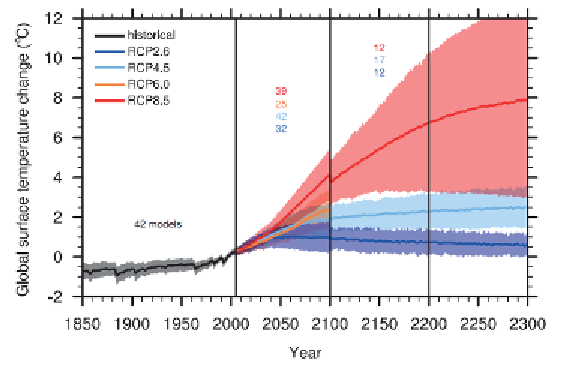Geoscience Reference
In-Depth Information
temperatures, emissions and CO
2
concentrations). Claiming that the
transported fraction is variable and/or dependent on emissions is a systemic
aberration, like that regarding
λ
G
in section 4.4. Nevertheless, it is tolerable
to produce scenarios on future concentration, as long as it is clearly stated
that the emission targets established to achieve them are highly dependent on
the long-term validity of carbon cycle models, in particular temperature
feedback on the absorption and re-emission of CO
2.
RCPs go even further than moving from emission scenarios to
concentration scenarios. They directly impose scenarios in terms of radiative
forcing.
Let us now return to the RCPs and ECPs (Extended Concentration
Pathways) represented on the right of Figure 9.4. What we asserted (section
9.3) about “historic” radiative forcing remains true of the RCPs: they pre-
incorporate all the coefficients of radiative forcing, without taking into
account any uncertainties. Then the spread of simulated global temperature
of the Figure 10.1 results only from the uncertainties of the factors of climate
feedback in the simulated models. To the extent where this coefficient is
nearly determined (each RCP predetermines the global temperatures
involved) with scarcely any need to move on to the enormous simulations
which use them.
Figure 10.1.
IPCC long-term projections (AR5, Figure 12.5)



Search WWH ::

Custom Search